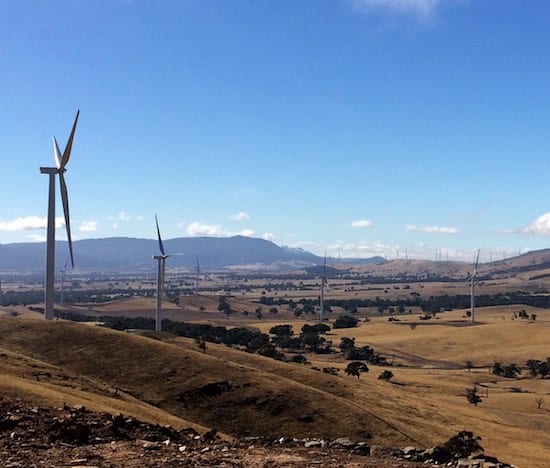The Victorian government’s renewable energy auction scheme, which underwrote construction of six new solar and wind farms, is forecast to deliver hundreds of millions in net benefits, a new report has shown.
The Annual Financial Report of the State of Victoria: 2018-19 published by the Auditor General this month, includes an assessment of the Labor Andrews government’s VRES – part of its legislated renewable energy targets of 40% by 2025, and 50% by 2030.
As RenewEconomy reported at the time, the VRES was a resounding success when it wound up in September 2018, allocating 15-year contracts to six renewables generators for a total of 928MW of wind and solar – much more than the 650MW initially targeted.
It helped to deliver such projects as the 336MW Dundonnell wind farm near Warrnambool, and the 180MW Berrybank Wind Farm in the state’s west, which is using Vestas turbines built in Geelong at a repurposed Ford factory.
At the time, state energy minister Lily d’Ambrosio told RenewEconomy that the auction had delivered “great value” for the state, with bids lower than what had been expected.
“It just shows you that the market is really ripe for investment … when given the policy certainty,” she said.
The auditor-general’s report shows that great value is continuing to be delivered, with the agreements expected to deliver positive net cashflows over the life of the contracts. This covers just four of the six projects, as it appears two of the projects (not identified) have not yet ticked all the boxes to meet their “conditions precedent”.
“At 30 June 2019, DELWP reported four of the six agreements as a derivative financial asset with an estimated fair value of $285 million, and the same amount as income in the net result from transactions,” it says.
It’s good news for the government, and bad news for detractors of the scheme, such as The Australia’s Judith Sloan, who – not long after its close – complained that reverse auctions involved “huge subsidies” to the project developers “guaranteeing cashflow at high megawatt-hour prices.”
As Giles Parkinson explained back then, this is inaccurate. The wind and solar projects are guaranteed to receive a tariff of around $56/MWh (slightly less for some solar projects). This compares to the current wholesale price of $90/MWh.
“If the market price stays above the price guarantee, the wind and solar farms do not collect the extra money. It goes back to the government – a similar system that has benefited the ACT government. Only if the prices go below $56/MWh does the government make good the difference,” he said.
The auditor-general’s report, too, does a good job of explaining how it works.
“This is known as a ‘contract-for-difference’ payment arrangement, since the difference between the strike price and the market price is settled as a net cashflow payment,” it says.
“An asset is recorded when an agreement’s total estimated discounted net cashflows are positive, and a liability is recorded when they are negative.”










